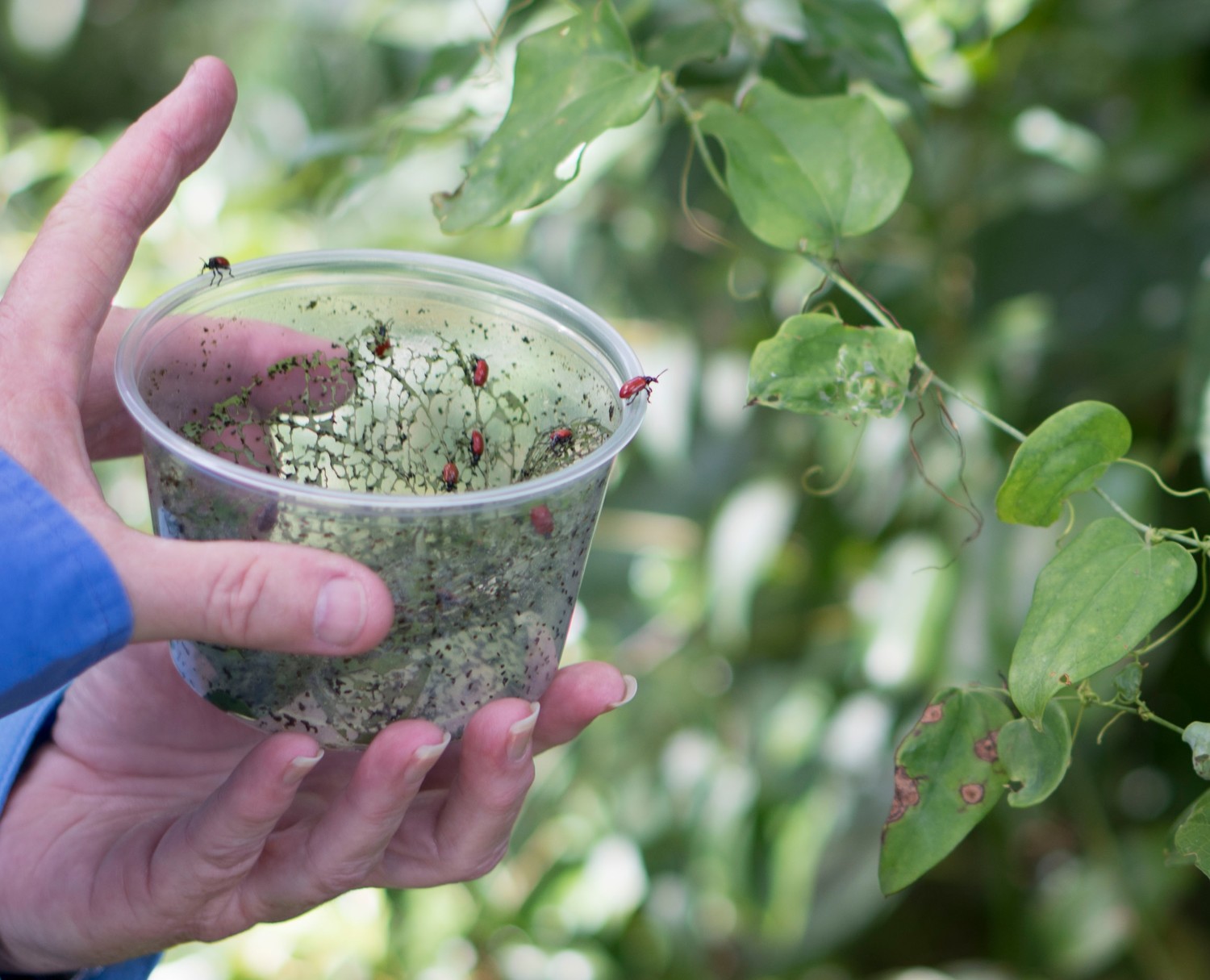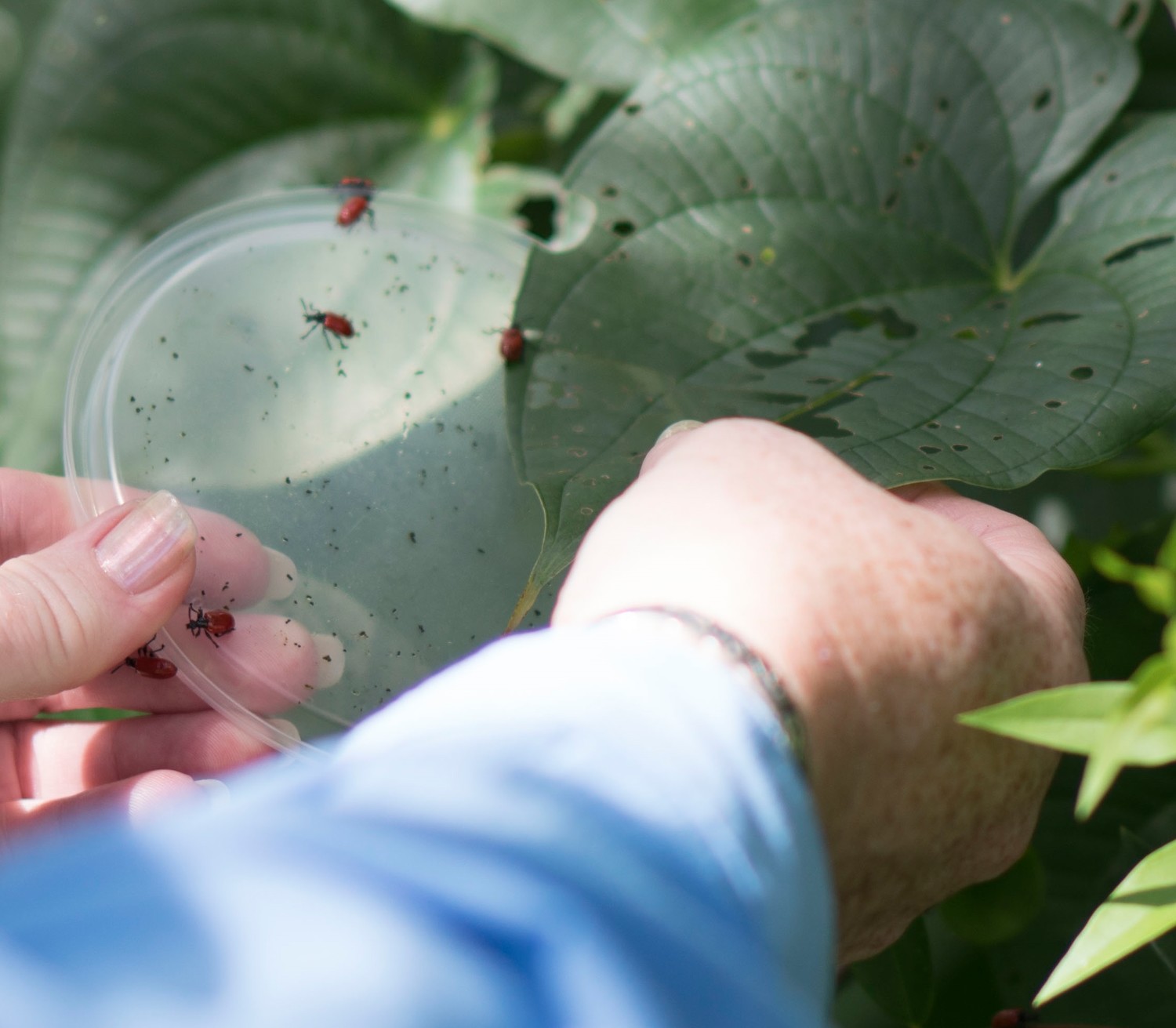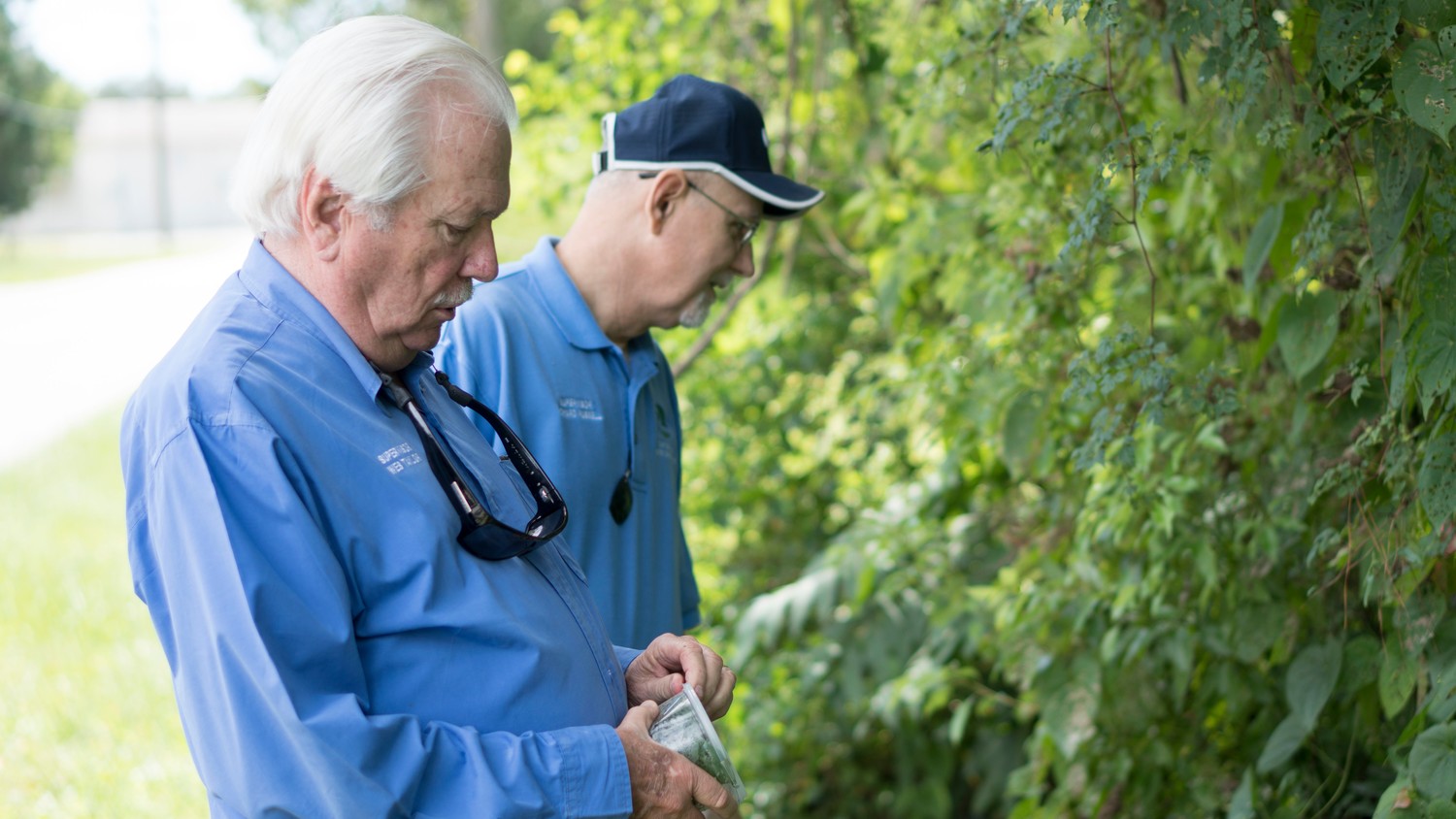Beetle to tackle air potato invasion
The war on invasive plants
GREEN COVE SPRINGS – The air potato population growth in Clay County may soon be coming to a halt thanks to a very special type of beetle whose origins lie in the Far East.
On Aug. 10, the Clay …
This item is available in full to subscribers.
Attention subscribers
To continue reading, you will need to either log in to your subscriber account, or purchase a new subscription.
If you are a current print subscriber, you can set up a free website account and connect your subscription to it by clicking here.
If you are a digital subscriber with an active, online-only subscription then you already have an account here. Just reset your password if you've not yet logged in to your account on this new site.
Otherwise, click here to view your options for subscribing.
Please log in to continueDon't have an ID?Print subscribersIf you're a print subscriber, but do not yet have an online account, click here to create one. Non-subscribersClick here to see your options for subscribing. Single day passYou also have the option of purchasing 24 hours of access, for $1.00. Click here to purchase a single day pass. |
Beetle to tackle air potato invasion
The war on invasive plants
GREEN COVE SPRINGS – The air potato population growth in Clay County may soon be coming to a halt thanks to a very special type of beetle whose origins lie in the Far East.
On Aug. 10, the Clay County Soil and Water Conservation District released air potato beetles into six different locations in Green Cove Springs to help control the rapid spread of the category one invasive plant species known as the air potato. Wes Taylor, a supervisor for CCSW and Stacey Simmons, an environmental specialist from the St. Johns River Water Management District, were joined by a small gathering of people involved with the project to release six batches of beetles directly onto air potato vines in hopes the insects will destroy the plants.
“Our goal here today is to bring some control to this otherwise unruly vine in urban areas [like Green Cove Springs],” Simmons said.
Air potatoes, which aren’t actually potatoes at all and are instead a part of the yam family, are an extremely invasive species in that its vines can grow up to eight inches in length a day and over 70 feet in height, according to Simmons. While the plants might be invasive, meaning they can easily take over a small forest area or a garden, the air potato isn’t necessarily dangerous to humans or animals.
Air potatoes hold virtually no nutritional value and the potential for digestion issues are small, although possible. Despite its non-lethal character, in just one season, an air potato plant can completely overtake surrounding foliage. It does this by overshadowing all other plants in its area, thus removing other plants’ proximity to sunlight. Its growth results in a newly-created humid environment that allows different fungi to grow, which can also damage or destroy plants, and weigh plants down.
“My understanding is that we find it a lot in older urban sights as it used to be ornamental, but now, it’s an ecological concern and because of that, it’s classified as a category one invasive species,” said Chris Kerr, a biological scientist for the Florida Department of Agriculture and Consumer Services Division in Gainesville.
Because Green Cove Springs serves as a perfect home to the air potato, it was an ideal location for the University of Florida’s Institute of Food and Agricultural Sciences to release some of their air potato beetles. These beetles are the perfect combatant to air potatoes, according to Kerr, because it’s literally the only thing they eat.
“They are incapable of surviving on anything else,” Kerr said. “The adults might feed on closely-related plants, but they’ll only eat one-tenths percent of its surface area if that’s the only choice. They’ll nibble but that’s it. They’ll soon after starve.”
Larvae, on the other hand, eat exclusively air potatoes and won’t even bother with other plants.
At each of the six designated locations, about 50 beetles were released. While 50 beetles alone aren’t capable of taking on an entire population of air potatoes, in just a few months, they’ll be more than ready. That’s because each month a female air potato beetle will lay about 1,200 eggs. Each of the eggs will grow into a beetle that will help tackle the problem and the cycle will continue. After they’ve consumed all they can, the beetles will go into diapause where they’ll sleep in leaf litter. They’ll re-emerge in the spring about a month after the vines start growing again to begin their feast once more.
Despite their seasonal feasting on the invasive plant, the air potato beetle will not eradicate the plant completely from an area.
“While beetles will feed on older leaves and occasionally the aerial bulbils [the part of the plant that looks like a potato], they prefer to eat new growth and this curtails growth significantly and prevents it from climbing high into the canopy and choking out trees and other plants,” Simmons read on Aug. 10 before giving Taylor the go-ahead to release the beetles. “By damaging the plant and reducing its resources, the beetles also limit the number of new bulbils produced and thus limit the propagation and spread of the plant.”
According to Kerr, though, anyone is free to attempt to eradicate the plant completely, but he warns that hands-on eradication requires a lot of effort.
“If you want to eradicate the plant, it’s absolutely possible in about one or two seasons, but it depends on the effort you put in,” Kerr said. “The more tactics, the better control you’ll get. You’ve got to physically remove the vine, dig up the tubers, remove the bulbils, utilize chemical applications and you must do all of this at the right time.”
For those looking for an easier approach, and perhaps for those trying to simply stunt the growth of the air potato in their area, you can email Kerr at Christopher.Kerr@freshfromflorida.com to request beetles. Kerr and his team will help anyone interested coordinate a release of beetles into areas of interest.













